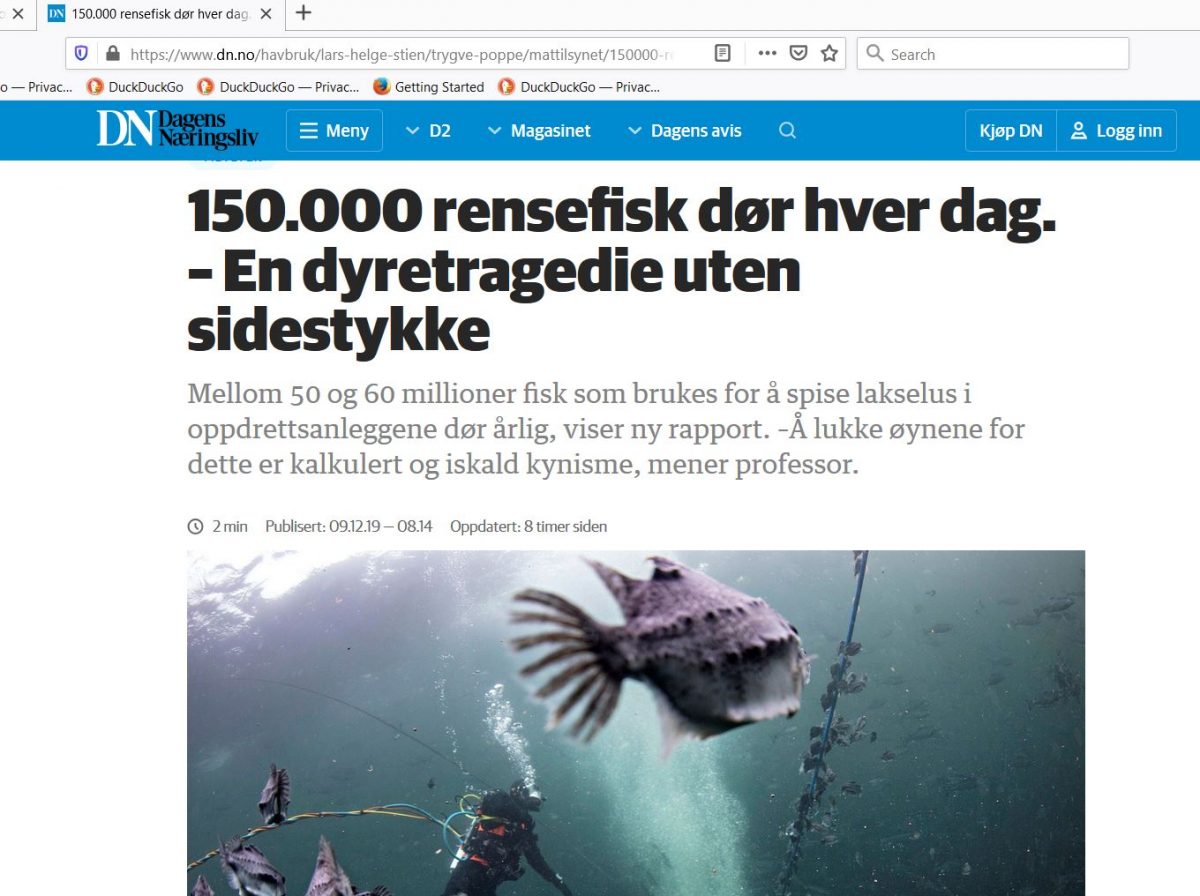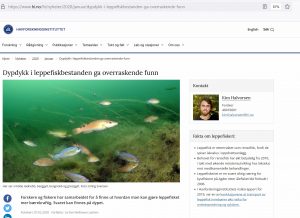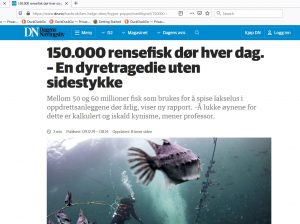In the 60and 70s i used to catch wrasse on the south west coast of england.
Always in the seaweed, and more often than not with the most beautiful markings and colours.
But there was a strange thing, they had teeth in their throats as well as in their mouths. The teeth were on plates, presumably 2 plates worked against each other to grind things up.
I later learnt that indeed they were just for this.
Their food includes crabs,shrimps,hermit crabs, shellfish— and seaurchins. ( the destruction of the Norwegian seaweed forests are mainly attributed to seaurchins)
Of course it also includes fish lice this is why they are so important to the salmon farming industry.
Along the the coasts of many countries in europe and many other lands there is now a massive fishery for those fish. ( and other species)
They are caught live and transferred to the salmon pens where they live for up to 6 months before dying. In other words there is a concerted effort to wipe out these species.
i have read a number of papers on wrasse, they hint that some species are territorial and are in fact gardeners. That is they care for their patch by removing herbivores, and species of seaweeds they dont like. Herbivores would include seaurchins.
Serious information seems remarkably difficult to come across – the question is why?
Here is a snippet from a reply to a request for information to the scottish government concerning wrasse for the wrasse fishery.
It is dated 2019
STATEMENT OF REQUIREMENTS
1.1 Purpose
The purpose of this contract is to inform Scottish Natural Heritage’s views and build our
evidence base on the biodiversity implications of the fishery for cleaner fish , focusing on
the relevant protected sites and species. This will enable us to develop appropriate
advice on activities affecting features and relevant management measures in an area
which is currently data poor and consequently poorly understood. The contract will also
inform our thinking on the need to include cleaner fish species in the monitoring of the
MPA Network and enable SNH to assess the feasibility of this and develop appropriate
methodologies. The output from this project will also feed into wider work relating to
inshore fish species and support the Scottish Government inshore fisheries strategy
In other words THEY DONT KNOW what effects cleaner fish (wrasse) have on the ecology and what effects removing such a large number of fish will have in totto – several years after the fishery started.
This is what the Norwegian havsforskningsinstitut has to say –
Forskere og fiskere har samarbeidet for å finne ut hvordan man kan gjøre leppefisket mer bærekraftig. Svaret kan finnes på dypet.
The leading sentence says – fishermen and researchers work together to see how one can make (lip fish – wrasse have big lips) leppefiskeriet
more sustainable – the answer is found in the deep.
In other words the answer to a more sustainable fishery is to catch more –
There are several more articles in the same vein – some more information on the fish themselves but it is fragmentary.
But here is one reinforcing the standpoint of this article
This involves many countries and has this to say –
This project, and report, was initiated by researchers at the Institute of Marine Research (IMR) and builds upon several years of scientific work linked to the biology, fisheries and use of wild wrasse and lumpfish. Interactions with colleagues from Denmark, Sweden, Iceland, and the United Kingdom highlighted critical knowledge gaps which must be addressed to achieve sustainable fisheries of cleaner fish with minimal negative environmental impacts. Funding from the Nordic Council of Ministers enabled us to establish the present network of scientists and managers. Key topics were identified and discussed in meetings and workshops during the project period.
Again merely reinforcing the standpoint of this article that not enough research has been done, and this fishery has been ongoing since 2010 in Norway.
Question – does this show a disregard for the environment in spite of the current issues, that can be laid squarely at the door of big business?
An article from the Norwegian press
150,000 cleaner fish die every day, it is a animal tragedy without parallel.
This is not limited to Norway, but every country with salmon farming.
This is not sensible utilization of a natural resource. If we want our seas to be a resource for future generations we have to do far better than this – Perhaps our research organizations are too close to industry and our politicians are desperate to please the same.



